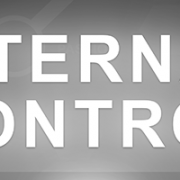Avoiding high costs
with obsolescence management
An inevitable element of owning technological solutions is that they will become obsolete over time. Whether a component, a method or production becomes obsolete, obsolescence can be very expensive for your business. An obsolete component could stop production all together or hinder a new design, so it is essential that you plan ahead to avoid the costs of obsolescence. Here we explore how you can keep on top of components and determine when you need to be proactive to avoid high costs.
Manufacturer notifications
The main important source of information about component obsolescence is the manufacturer notification that will be sent out when production of the component is stopped. Manufacturers will issue product change notifications, end of life notifications and last time buy notifications that will signal obsolescence before it occurs. To receive these notifications, you will have to sign up to direct distribution channels, but unfortunately there will never be a single solution or source of this information even within a single machine. Planning for obsolescence will take time and you will need to sign up for notifications about all components that could affect your business.
Stocking spares
Another good way to avoid high costs from obsolescence is by stocking spare parts. If you have a bank of spare parts, then you can always fix the problem when it occurs. If you then find that you can’t replace your spare, then you will at least have a working machine while you try to solve this problem. If you realise that you can’t replace a part at the point at which your production line has stopped, however, then you will be facing massive losses while you frantically look for a solution.
Automation insight
As well as avoiding obsolescence through notifications and stocking spares, it is vital that you also look forward to keep on top of the technologies in your business. Business owners must accept that their automation systems will not last forever and must use automation insight to look at the future possibilities. By keeping ahead of the trend and updating the systems before they become obsolete, it is possible to avoid the high costs of obsolescence. While the cost of upgrading machinery and technologies may be high, it will be far lower if you carry out the upgrades when you still have working machines and are able to keep the factory rolling and resell the existing equipment.
with obsolescence management


